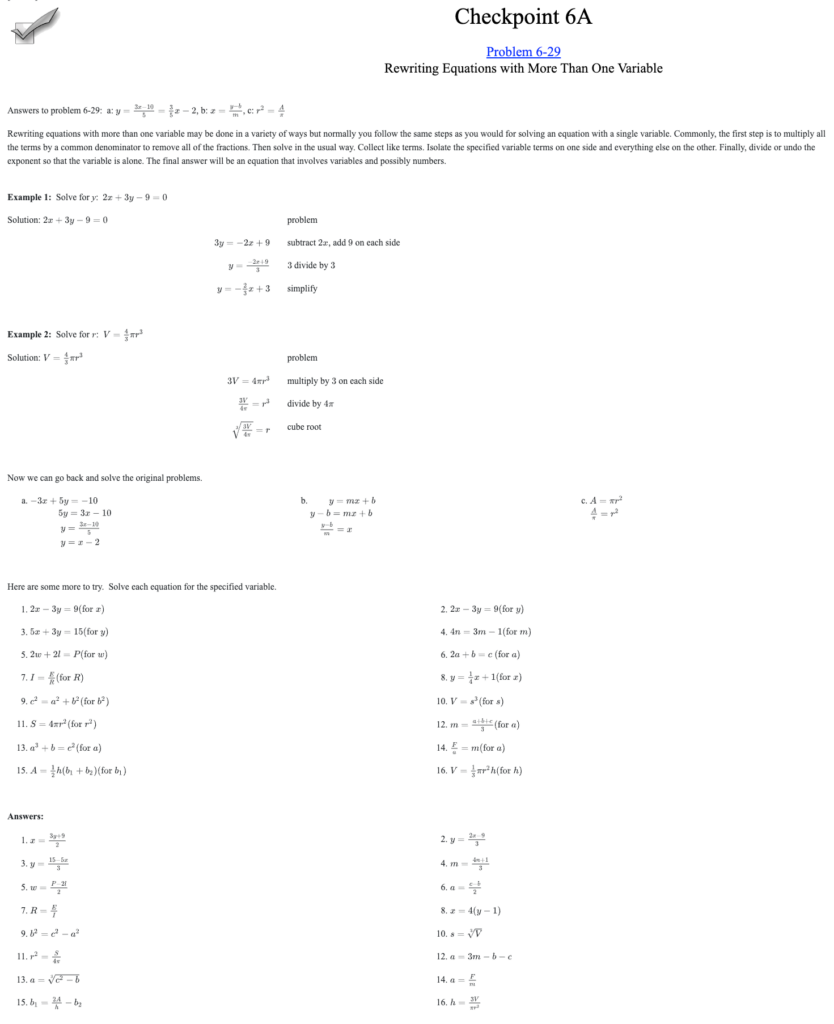Lorna Vazquez, Neillsville, WI lornavazquez@cpm.org
Whenever I set teams to work, after making sure the directions have been clearly stated and that students are all aware of the expectations for effective teamwork (team norms, roles, responsibilities, etc.), I promise myself that I will make the first three circulation passes purposeful by using what I like to call my three pass promise. Sticking to my promise helps me focus the lesson and stay on pace. However, one word of caution: there are some prerequisites that have to be in place for the promise to work. Those prerequisites are listed at the end of this article.
First Pass: I promise the first pass will be quick. I probably will not stop at any teams since I am just quickly following my pre-determined circulation route looking to see that the teams are focused on the right task or problem, with the required number of iPads or books, open to the correct page. I make sure that someone has been designated to read the problem or task and that they have started to do so. I am looking to make sure all
students are starting together and paying attention to the reader, discussing their strategies, asking questions of one another, or beginning the Think-Pair-Share or other study team strategy requested. Finally, I want to know they are all ready to record or do whatever has been asked.
In other words, the first pass is a quick check-in just to see that the students are following the protocols for getting started as a team. During this pass, I will only answer clarifying questions, and then only if the whole team has the question. That is, if an individual student asks me, “Are we supposed to write this in our notebook?” I will simply ask the entire team, “Can someone please clarify the expectations?” When directions are clear this should be sufficient, and redirecting questions from individual students back to the team helps ensure that teammates will begin to pay attention to, and rely on, one another.
Second Pass: This pass is relatively quick as well. I am looking for points of confusion or hesitations and for any obvious false starts or processes that are totally misdirected. If teams have a question at this point, it is usually about what they are supposed to be doing rather than if they are doing it right. If it seems the directions are unclear to many, I may do a quick Huddle for clarification.
I look for teams that are off course and redirect where needed. At this point, most teams are just beginning to make progress and I do not want to interrupt the flow, so I am simply making sure that every team has an access point into the problem. I will also point out, usually with questions, any interesting approaches that I see and encourage students to discuss. For example, I might say “It looks like your team has multiple approaches. Have you talked about your strategies yet?” This is also a time to encourage and invite conversation especially when you notice teams are not working together. I might say something such as, “Great, it looks like two of you already have thoughts on a possible solution.” Again, I am not stopping at teams for more than a quick 10 – 20 second period, I am just ensuring that teams are functioning, progress is being made, and encouraging math discourse and collaboration.
Third Pass: Only now, after the first two quick passes have assured me that progress is being made and teams are on task appropriately, will I look for processes and solutions that I want to have shared. This is where I begin to select and sequence the math that I expect students to be drawing out of the problem or task. This pass will take a bit more time, as I now want to stop at teams (no more than a minute though) and have students clarify their thinking or ask questions to uncover student thinking. This is the first truly formative assessment pass; I am trying to determine if the math behind the problem is coming through as I anticipated. I also want to use this pass to begin to draw a whole team’s attention to promising approaches, especially if I can draw attention to an approach used by a student who I know needs a boost in status.
I think it is helpful at this point to carry a clipboard with a team map on it, so I can record which teams I want to share and highlight once I bring the class back together to summarize the math. It is also a good idea to let teams know ahead of time that you will be asking them to share.
Following Passes: Continuing passes are used to formatively assess whole class progress and determine when to call a halt, when to step in, when to redirect, when it is necessary to call the class together to summarize, etc. On any pass, be aware of how much time you spend at any one team. If a team seems to need more help than you can supply with some good questioning, then consider using a study team strategy such as I Spy or Swapmeet to move the whole class forward.
Prerequisites for the promised passes to work:
- Students need to have a clear understanding of what you expect them to be doing in teams. Team norms need to be well established, posted, and understood. Role responsibilities need to be met.
- The problem or task assigned for teams to work on collaboratively has to be team-worthy. In most lessons there are problems that are team-worthy, as well as some that may be best done individually. For example, problems designed for review, or to quickly connect to previous learning, may best be done individually so students and you can formatively assess and clarify misconceptions. A good way to strike a proper balance between individual and team work is with the Think-Ink-Pair-Share study team strategy which provides time and structure for students to pause and think individually before being asked to collaborate. It is a good go-to study team strategy for many occasions.
- A predetermined circulation route for this work is invaluable. I believe it is really helpful to be completely transparent with your students when you do this. Show them the route(s) you will use. Explain to them that you believe they are capable of quality teamwork and tell them specifically what you are looking for at each pass. Explain that if the entire team has a question, the Resource Manager should designate a person to raise their hand and you will be sure to stop during the next pass. In other words: stick to the route with purposeful passes and always engage with the entire team rather than individual students.
Do this, and my promise to you is this: your students will begin to learn to rely more on their teams and team resources and will become more successful and more self-regulated learners.


